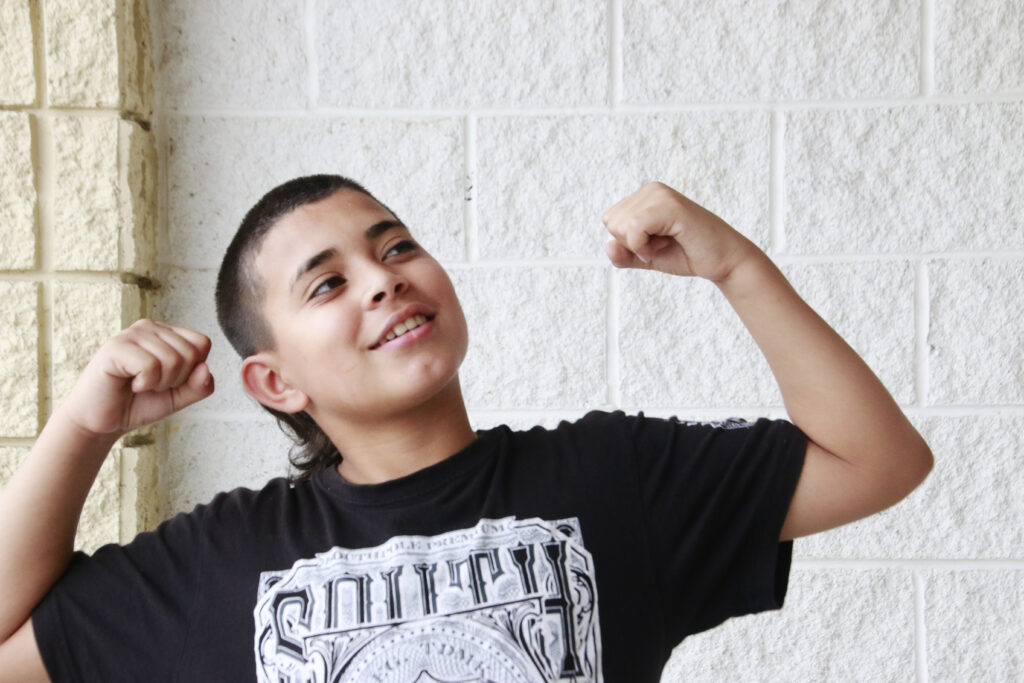Despite recent decreases in teen pregnancy rates, the Bronx has the highest teen pregnancy rates and sexually transmitted infections in all of New York City – not due to increased sexual activity, but due to high levels of poverty.
Food scarcity; high rates of homelessness, incarceration, dropout and violent crime; limited access to quality healthcare; and insufficient funding for evidence-based health programs all contribute to making the Bronx an area of vulnerability to raise young people.
“Teen pregnancy doesn’t just affect the father or mother, but also their offspring for generations,” said Estelle Raboni, program director for the Teen Outreach Program® (TOP®) offered by Morris Heights Health Center (MHHC) located in the Bronx, New York. “The high dropout rate in the Bronx is the unintended consequence of teen pregnancy, and once that happens, the cycle of poverty begins to snowball.”
In fact, teen parents are more likely to drop out of school and live in poverty. Children of teen parents are more likely to grow up poor, experience abuse and neglect, become teen parents themselves, and become incarcerated. In total, teen childbearing in the U.S. costs taxpayers at least $9.4 billion annually. This includes costs for health care, foster care, incarceration and lost tax revenue.
Genesis Santana dropped out of eighth grade when she got pregnant. In 2011, she had her third child. “I never went back to school,” Santana said in an interview with the New York Daily News. “Kids get pressured to have sex, and everybody around them is saying ‘if you don’t have sex, you’re not cool. I don’t know why I don’t use condoms.”
“Merely implementing school-based health centers didn’t achieve the dramatic reduction in teen pregnancy we were expecting,” added Raboni. “All of our school-based health centers were staffed with social workers, physicians, health educators, school health assistants and more. But focusing on the issue from the waist down wasn’t the solution. TOP’s holistic approach was the linchpin we were seeking.”
Raboni attributes TOP’s success to the immediate teen engagement achieved through community service learning, and the ability to connect teens to strong, caring, consistent facilitators to support teens throughout developmental tipping points.
“Once teens get their first taste of community service, we see a transformation in even the most difficult classes,” added Raboni. “These teens are usually on the receiving end of help, so when they are able to switch roles and help others, self-efficacy and pride begins to bloom. They begin to see they have a voice, and ultimately, the ability to change the course of their future by making healthy choices.”
“One of my TOP students came from a single-parent home, and his father had been incarcerated throughout this life,” Raboni said. “He not only graduated, but chose to enter a two-year community college in order to complete his core classes before transferring to a four-year college. Next, he will enroll in one of the most prestigious pre-med programs in the city to become a doctor.”
While many of the schools where TOP is implemented in the Bronx have graduation rates as low as 50 percent and are at risk of being closed, TOP has been a game-changer for many of these schools.
“The dean in one of our schools noticed the difference among the student body,” added Raboni. “In the fall, the administration was reviewing their 12th grade cohort to see who was on track to graduate. He noticed that there were a group of 20 or 25 students who consistently had grades that were 10 to 15 points higher than their peers. When he and the school administrators investigated further to see what could be the determining factor for such a remarkable difference, they noticed that those 20 to 25 students had been participants in TOP since their freshman year. Their participation in the program put them on track to graduate.”
“These teens aren’t more privileged – they live in the same neighborhoods, take the same classes and have similar family and socioeconomic backgrounds. Because of their experience in TOP, they are more actively engaged in school, and approach their education with an entirely different attitude.”
Due to the success of the program, and its broader impact on students’ academic success witnessed by principals, MHHC has expanded its reach. “We are working in a school where the principal is so committed to the program, she has dedicated a significant portion of her budget to pay for an expansion of the program to serve the 9th and 10th grade students in their advisory classes,” said Raboni.
“The majority of these new-immigrant students arrive to New York with poor or inconsistent education, requiring them six years to graduate high school rather than four years,” added Raboni. “Thanks to the program, these students show more persistence in their schoolwork since the program launched in April 2011.”
MHHC was established in recognition of the need to improve primary and preventive health care of low-income, high-risk communities. MHHC received OAH funding to implement TOP in 12 middle and high schools in south, central and northeast Bronx in 2010. TOP programming is offered in-school and after school for teens ranging from 12 to 17 years of age.
To learn more, visit: http://www.cto-mhhc.org/.


